#hijra activist
Text
Shabnam Banu
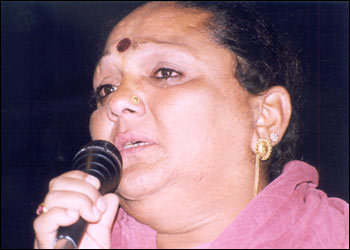
Birth : 1955
Ethnicity : Indian
Occupation : Politician,HIV activist,dancer, trans rights activist,social worker
Alma mater : N/A
Gender : Third gender
Sexuality : N/A
Party : Jeeti Jitayi Politics
Shabnam Bano or Banu is an Indian-born hijra , who is popular by the name Shabnam Mausi. She is also a prominent figure in trans rights movement.
Shabnam was the first hijra person to be elected as MLA in South Asia. She was an active member of the Madhya Pradesh State's Legislative Assembly (from 1998 to 2003). She inspired many hijras/kinners/khawaja saras in India to take up politics and participate in 'mainstream activities' in India, giving up their traditional roles as dancers, prostitutes and beggars.
Early life
Shabnam was born as intersex person in 1955. Shabnam's father gave her a masculine name Chandra Prakash. He was a police and a Brahmin hindu. After Shabnam's birth, he gave her to a local hijra community. Because he thought that his honour could be decreased in the society if someone find out that his child is an intersex.
Shabnam was adopted by Halima, a muslim hijra under the guru-chela kinship.In this matrilineal kinship Halima became her new mother (guru maa) & leader. Her guru nani (hijra grandma in guru-chela kinship) gave her a new name Shabnam Bano. Despite being a hijra, she attended only 2 years of primary schooling. Then she started begging, dancing in marriage & different occasion like other hijras.
Faith
From her early childhood she was raised in an interfaith Hijra dera (household). She practiced a religious syncretism, sometimes worshiping to hindu gods, sometimes praying in the dargah. After leaving the hijra community, Shabnam chosed brahmin lifestyle. Although she kept her muslim name Shabnam Banu.
#third gender#indian#hijra#trans activism#transgender advocate#hijra activist#hindu#cultural muslim#intersex#eunuch
4 notes
·
View notes
Text
Violence and Love in Monkey Man

Dev Patel's Monkey Man has played at my mind for two weeks now. This is for reasons that I'm able to articulate and for many that I probably have not yet been able to find the words for. This post is, in part, my attempt at sorting through some of my thoughts. My tumblr is all spoilers all the time. If you don’t want that, then please don’t read on.
Violence
Like most places in the world, systemic violence is a scourge in India. Monkey Man does not shy away from this reality and depicts Hindu nationalist state violence and violence against women and gendered minorities in the country to chilling effect.
We come to see this in the brutal rape and murder of Kid's activist mother at the hands of the police, while she tries to shield her child and her land from police and state terror. We see it in the treatment of (largely femme-presenting) sex workers in the two brothels featured in the film, including one frequented by the police and political elite. We see it in the violence and ostracisation meted out against the hijra, or third gender community by individual actors and the state more broadly. We see it in the state-orchestrated razing of an entire community after the land on which it sits is declared a "holy site". We see it in the movement of people from the regions to the city after their land has been stolen and the grinding poverty they face as a result.

Unlike so many action films, none of the violence in Monkey Man occurs in a vacuum. Even Kid's original means of making money in an underground fighting ring is done against the backdrop of his forced displacement from regional India to the city - a migration pathway that many in the country have been forced to take and which is a direct result of land theft and resource extraction in the regions by local and multinational corporations as well as federal and state governments.
The truth is that so much in relation to state and societal control is enacted in painful and violent ways on the bodies of the marginalised and oppressed. And I often think about how the horror and action genres are some of the best suited to speak about systemic injustice because of their capacity to make that violence uncompromisingly visible (one recent example is Mike Flanagan’s Midnight Mass which depicted the bloody fallout of the Christian missionary/colonial project in vivid crimson, splashed all over a non-descript maritime town in present-day America). The violence in Monkey Man is no different.
While Kid's realisation of the interconnectedness and heavy hand of the state not just in the violence experienced by his mother, but also by the hijra, and by sex workers like Sita comes later in the movie, we as the audience are given this insight earlier. Recall Kid pointing out to Sita that her tattoo is of a koel, not a sparrow as originally misidentified by the Australian client sexually assaulting her minutes earlier in the film.
Kid goes on to say that he grew up in the forest and woke up to koels singing everyday. Its the longest conversation that the two have but in those brief words, we understand that Sita too has likely been displaced to the city from the regions, probably under very similar circumstances to Kid. The way this displacement maps itself onto her body is distinctive to how it does so for Kid, with gender playing a large role in this.

Other factors like caste, class and religion also impact on how the characters in this film experience or perpetrate violence. I would write more on these intersections but then this post is going to get more unwieldy than it already is.
I will say though, that in India, where fascist Hindu nationalism is being used by government to harm minority communities, steal land and secure populist votes, Patel makes a distinction between revelatory and weaponised faith. Kid is raised in peace by his mother with the former, but as an adult he lives in a world where the latter has taken hold and is being used by those in power to shore up more of that power for themselves.
For me - as the descendant of parents, grandparents and great grandparents who lived through anti-Tamil pogroms led by Sinhalese chauvinists weaponising Buddhism as part of their fascism in Sri Lanka, who like the rest of us, is living in an election year for Hindu nationalist Prime Minister Narendra Modi in India, and who is also frustratingly, helplessly bearing witness as the state of Israel and it’s allies conflate Zionism with Judaism in defence of the genocide being waged against Palestinians - watching this action film make the distinction between revelatory and weaponised faith was profound.
Love
Patel makes it a point in this film to show how Kid's most nourishing relationships, the ones that sustain him - indeed the ones that literally save his life - are those that he has with women and with people who don’t conform to the gender binary. In doing this, we see what Kid is fighting tooth (quite literally) and nail for throughout the film. We see what is at stake - what we stand to lose - if perpetrators get to rule without accountability.
Its also no mistake that these relationships are all tied visually to the natural world in the film: Kid's mother's deep ties to the earth, rivers, trees and roots that she leads him through as a child. Alpha and the hijra's sanctuary, the Ardhanareeshvara temple with its most sacred space being the roots of a holy tree. Sita and her koel tattoo: the memory of the forest carried on her skin while she traverses the brutal reality of the city. Patel is making a point here too. About nourishment of another kind, through our connection with the earth instead of extraction from it. The visuals in the film drive this point home, particularly when contrasted with the industrialisation and poverty of the city.
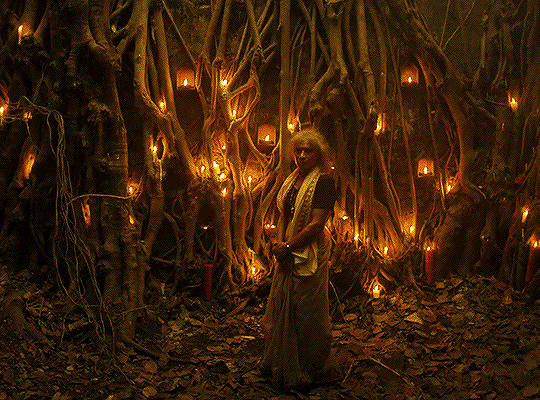
Two particular loving relationships that stood out for me were the love shared between Kid and the hijra community as well as between him and his mother.
Alpha, hijra Elder and the hijra community
Keeper of the Ardhanareeshvara Temple and hijra Elder, Alpha becomes a mother-figure to Kid after he is rescued with near-fatal injuries. It is Alpha who keeps watch over him as he recovers, helps Kid to confront the totality of his past memories which his trauma has kept fragmented, and who ultimately leads a veritable hijra army to join forces with him to assassinate some fascists.
Alpha's gentleness with Kid was so moving to see, in particular during the conversation they have about his attempt as a child to save his mother from the fire set by her rapist and murderer. That exchange moved me to tears.
Kid: I failed her.
Alpha: No. You tried to save her. You see scars. I see the courage of a child fighting to save his mother.

The wider hijra community at the temple also take Kid in and care for him during his recovery. Truly, the scenes at the temple were some of my favourite in Monkey Man. Outside of his memories of his mother, they are the only scenes where we see love, peace and joy on the faces of any of the characters in this film.

Also witness this moment of delight below as the hijra at the temple appreciate a fine ass man channelling his righteous anger and fucking up a punching bag full of rice. I note that the music during this training montage is simply stunning. Ustad Zakir Hussain's rapid fire tablas punctuated by each of Patel's landed punches and kicks and then followed by Jed Kurzel's achingly soaring instrumentals (listen to "The Kid" from the movie's score) were just *chef’s kiss*.

Another favourite moment for me was when Kid decides to go back to the underground fight ring one last time and not throw his matches (as he had been doing prior). He bets on himself and when he inevitably wins his fights, he takes the money and gives it to the hijra, ensuring that they can continue to live at the temple without fear of being evicted. We love to see a man who literally pays his rent.
Neela, his mother
Kid’s first teacher and the center of his life as a child. In almost every memory we are shown of her, Kid remembers his mother walking through a forest, sharing her ecological and religious knowledge with him and in doing so, positioning him within the wider world.

GIF by dailyflicks
We watch as he takes this understanding with him forward through the remainder of the film. His conversation as an adult with Alphonso as they drive through the city in the latter's tuk tuk is emblematic of this. "They don't even see us", Kid says of the elite who frequent the club where he has just gained employment, "they're all up there living and we are stuck in this."
His mother showed him what it was to live: to be still and in concert with the world and the Divine around you, to be loved fiercely, and to thrive as a result. This is in stark contrast to what Kid has had to learn to do in the city: to survive, to merely exist. He is never depicted resting or at home as an adult. He's always working, hustling and planning for the next thing, his next step. When he loses his village, his land and his mother as a child, Kid also inevitably loses his sense of home. It’s no coincidence that the tracks “Home” and “Mother” on the movie’s score sound almost identical.
Later at the end of the film, we see Kid close his eyes, having done what he set out to do. The last thing he sees is his mother, smiling at him in the forest. Her face is the face of God he gazes at before he succumbs to his injuries. This devotion to his mother is not just that of a child to a parent. Its also deeply tied to his Hindu faith which calls on its followers to honour the Divine Mother, the supreme feminine energy, Aathi Parashakthi, in all her manifestations including in those who mother us.
The movie ends with Kid’s deep, revelatory faith - instilled in him by his mother - and with the death of the man who weaponised that faith for power and wealth. It left all of us in the cinema seated in stunned silence even as the credits began to roll.

To describe Monkey Man as simply a revenge film does it an absolute disservice. This is not revenge. It is defence borne out of deep love for community and righteous opposition to injustice. Seeing hijra warriors dressed as Kali, the goddess of destruction, dealing death blows against fascists while spinning in the most beautiful lenghas was exhilarating (I literally screamed “YESSSSSSS!” at the screen when they arrived). Seeing Sita take out pimp and sex trafficker Queenie got me cackling and yelling “whoooop!”. Seeing Kid, a masculine character act to defend women and people outside of the gender binary, from further systemic harm without any ulterior motive was absolutely unreal to witness on the big screen. Seeing a person of faith act in deep connection to that faith without judgment against anyone but those who perpetrate harm made me feel hopeful in a way that took me by surprise. Kid acted out of love and respect. I would argue that Sita, the hijra and Kid all acted out of recognition of a shared humanity.
And at a time when folks from marginalised communities are being subjected to horrendous violence worldwide, both interpersonal and systemic, watching the oppressed take their perpetrators out…and I mean out (see: a rapist and murderer getting bludgeoned to death with a glittery high heel and a fascist, self-proclaimed “holy man” being stabbed in his third eye by the blade he hid in his own “sacred” pathankal/paduka), well, it was cathartic to see.
Am I saying violence is the answer to systemic violence? I think the answer to that question is context-specific. Non-violent resistance has a place, but it’s by necessity a performance and requires an audience. What do you do when no one’s watching? What do you do when the people who are watching are doing nothing to stop your suffering? What then? These questions are what many liberals refuse to grapple with because the answers are too uncomfortable for their polite sensibilities. But if you keep your foot on someone's neck long enough, you should expect them to fight back, by any means necessary. In Monkey Man, we have an action film where we get to witness that resistance in all its visceral glory.
#monkey man#dev patel#jordan peele#vipin sharma#adithi kalkunte#sobhita dhulipala#reva marchellin#dayangku zyana#this post is so fucking long but this movie has been sitting on my heart and my chest for days
107 notes
·
View notes
Photo
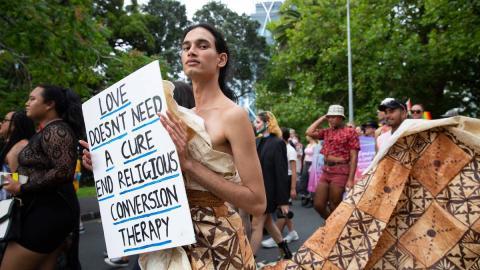
Shaneel Lal
Gender: Transgender non binary (they/them)
Sexuality: Queer
DOB: 22 January 2000
Ethnicity: Native Fijian (iTaukei and Girmitiya)
Occupation: Activist, model, columnist
Note: They also identify as Vakasalewalewa and Hijra
#Shaneel Lal#transgender#non binary#queer#2000#native#indigenous#fijian#pacific islander#asian#indian#poc#activist#model#columnist#popular#popular post#200
259 notes
·
View notes
Note
People will really discount everything an activist has to say because they dare to actually have a definition for man and woman, and then go ahead and promote Ghandi as a beacon of righteousness
I bet Gandhi himself wouldn't agree with 10% of what these people have to say, but he is of course the best person to ever have walked the earth lmao. (also note how these people never talk about Nehru? when he was at least as important as Gandhi imo)
and before people now come here and tell me about Hijras: Hijras are gay men who dress and behave in a certain way. Not even in Indian culture Hijras are identified as women. They also don't become Hijras by self-identification, but by different initiation rituals.
they have literally nothing to do with being transgender.
18 notes
·
View notes
Text
The history of the acronym ‘LGBTQIA+’
The acronym ‘LGBTQIA+’ is used to describe those identifying outside of the gender and sexuality norms. The acronym stands for ‘Lesbian, Gay, Bisexual, Transgender, Queer, Intersex, Asexual/Aromantic, plus’ each of which is a separate identity within the community. But how did this acronym come to be? And how can an acronym be so defining of a cause?
The term ‘homosexual’ had gained a negative connotation in the United states of America, even now it is only used in specific circumstances. The word ‘Gay’ then filled the linguistic gap and gained popularity in the 1970s, as it did not refer explicitly to sexual activity. As time went on, the word ‘Lesbian’ also became more widely known. However, disputes over what the main political aim should be; gay rights or feminism, led to a large number of lesbians branching off. This created other, smaller, social groups; one such example being the ‘Daughters of Bilitis’ who were the first lesbian civil rights activists. They eventually disbanded due to the idea that ‘butches’ and ‘femmes’ were heteronormative and patriarchal.
In the late 1970s or early 1980s, there was a push for bisexuality and transgender inclusion. After the relief felt post the stonewall riots, there was less acceptance of bisexuality leading to the misguided belief of bisexuals being men or women too scared to come out as gay. Transphobia was also common with the idea that these people were simply upholding stereotypes and traditional norms. These beliefs have been carried forth by parts of the community even to modern day, with the idea that ‘Transgender’ should be removed from the acronym.
Around 1988, the acronym ‘LGBT’ had solidified as a term used for the queer community throughout the United States. Since then the acronym has evolved and adapted to be more inclusive of an increasing number of marginalised groups, each adaption carries controversy with it.
The addition of the letter ‘Q’ includes ‘queer’ or ‘questioning’ people into the community. The word ‘Queer’ was often used as an insult and has since been reclaimed by the community. This has led to the development of ‘LGBTQ’ and ‘LGBTQQ’, however many believe that the word ‘queer’ should not be associated with the community and this argument has carried over to this day.
Around the same time, ‘GLBT’ came into existence– this was fundamentally the same, but had ‘Gay’ in front of ‘Lesbian’. The order in which the letters appeared was not standardised in any way which led to international discrepancies between the queer communities, Spain uses LGTB due to their specific preferences.
Other sexualities and gender identifications were recognised under the label of either bisexual or transgender. This is when the use of ‘LGBT+’ began gaining popularity since it meant ‘lesbian, gay, bisexual, transgender, and all other related identities’, others began using a letter like ‘U’ for unknowing, or ‘C’ for curious. There was a pull in many directions with a call for the addition of an ‘H’ for ‘HIV infected person’, a ‘P’ for those in polyamorous relationships, and an ‘O’ for ‘other'.
In 1990, the community and activists began to take in different cultures’ approaches to gender. ‘TS’ or ‘2S’ was used to represent ‘Two Spirit’ people, these are people indigenous to America who use to describe people fulfilling a traditional third gender. In India, ‘LGBTIH’ is sometimes used to include the third gender of ‘Hijra’ and related identities.
At this point, it becomes difficult to pinpoint when exactly the acronym evolved as it was happening through speech alone. Sometime during the early 2010s, the addition of ‘Intersex’ was controversial as many believed that it should fall under the ‘transgender’ label. Intersex people, too, were against the addition as they believed it impeded the progress being made on the rights of intersex people. Julius Kaggawa of the SIPD Uganda wrote that while the queer community ‘offers us a place of relative safety, it is also oblivious to our specific needs’. Emi Koyama has written that the LGBT community could fail to recognise intersex-specific struggles.
In roughly 2015, aromanticism and asexuality became more accepted and understood and joined the community and therefore the acronym. The ‘A’ in ‘LGBTQIA+’ stands for ‘Asexuality’, ‘Aromanticism’, ‘A-spec’, and ‘Agender’, as well as the related communities. People outside the community have claimed that the ‘A’ stood for ‘Ally’, which was met with immediate contradiction as it was erasure of part of the queer community.
The acronym is still debated to this day as many use a shorter version; ‘LGBTQ+’ and others argue that it is queer erasure. People still call for the removal of transgender as they believe the community should be focused on sexuality, and there is still bisexual and asexual erasure by a large party within the community. However, ‘LGBTQIA+’ is recognised as the full acronym to describe the queer community.
Sources: ‘The Handbook of Lesbian, Gay, Bisexual, and Transgender Public Health: A Practitioner's Guide to Service’ by Michael D. Shankle, ‘Sipdug.org’, ‘The Transfeminist Manifesto’ by Emi Koyama, ‘From LGBT to LGBTQIA+: The evolving recognition of identity’ by Erin Blakemore.
6 notes
·
View notes
Text

First of all I am sick of people appropriating AAVE, especially in an insulting way.
2) So these people have a problem when generally others find it tedious to use long or ludicrous terms (example- uterus owners, people with estrogen based endocrine system) instead of simply "women" to describe something only the female sex experiences in a patriarchal system.
But now it's "transparently transphobic" to even categorize social experiences by sex (idc if you believe sex is biologically immutable or just a social construct but if you believe there's no sexual inequality on basis of sex then you're just unbelievably stupid).
If you go through the notes you will see the brain rot there.
What actually pisses me off about this tho, and why I felt like ranting about it here, is that these people tokenize third gender culture and feminism of brown women ALL THE TIME.
(Despite them certainly knowing hijras are exclusively males and there is a history of the patriarchy's role in creating some of them but they somehow see it as gender liberation.)
If they actually found out how "afab" people (LBT- Lesbians, Bisexual women and Trans men) from our country's LGBT community form organizations only for those who are female because we recognize misogyny is sex based and how "amab" people hold more privilege, they will freak out.
They will freak out when they find out we recognize homophobia is sex based oppression too. Our laws literally specify people of same sex cannot marry regardless of gender identity, meaning a trans woman cannot marry a cis man and same for trans men and cis women unless said trans people undergo complete SRS. And the ability to pay for it is a privilege only middle and upper class same sex attracted people who haven't been shun out by their families enjoy.
It is literally necessary for us to organize on the basis of sex to get our rights.
Despite all this fucking bullshit, we're being asked to focus more on trans people than on "love is love". That India's LGBT activism is not trans inclusive enough (I hate these stupid white bootlicking libfems sm) because our activism doesn't look like the West's.
Ik op is not Indian but the amount of both Indian liberals who fall for this bs....although Indian radfems are not less guilty of indulging in bootlicking white people and Western activism, both responding in bad faith to each other while knowing absolutely NOTHING about their own country's history and activism regarding gender and sexuality. My views are still very different even according to Indian LGBT activists' beliefs, and yet I have more respect for them instead of fuckers like you who think online content creation is fighting for "queer rights".
Like girl, our activists were fighting even during a time when terms like "lesbian", "bisexual", "queer" etc were not known and used here. Ik for a fact you were introduced to gay and trans activism via Western media but I swear we have our own history and community and you do NOT need to nod your head to whatever these idiots say.
How can you believe this bullshit despite coming from a country where female infanticide occurs because daughters are seen as a "burden" to their fathers?
Postmodernism along with US cultural imperialism is a fucking disaster.
#I have come across hijras who believe they are privileged compared to women and that the female sex experience is different from theirs#and I don't even like how hijras talk about womanhood at all but they are genuinely so much less worse than trans people who follow Western#gender ideology#desi lgbt#lgbt india#desi feminism
14 notes
·
View notes
Text
The history of transgender people
The history of transgender people is complex and varied, stretching back to ancient civilisations and continuing through to the present day. While there is no single narrative that can capture the full breadth of transgender experience, there are certain key moments and figures that have helped shape our understanding of gender identity and expression.
One of the earliest recorded examples of transgender identity comes from the ancient Sumerian civilisation in Mesopotamia, where priests and priestesses of the goddess Inanna would sometimes dress in clothing associated with the opposite sex and perform rituals that blurred traditional gender boundaries. In other cultures, such as the Native American tribes of the Two-Spirit tradition or the hijra communities of India, individuals who did not conform to traditional gender roles were often revered as having special spiritual or healing powers.
The modern concept of transgender identity emerged in the mid-20th century, when medical professionals began to recognise that some people experienced a persistent and distressing sense of incongruity between their gender identity and the sex they were assigned at birth. This led to the development of gender-affirming medical treatments such as hormone therapy and gender confirmation surgery.
One of the earliest known examples of gender-affirming medical treatment took place in Germany in the 1920s, when Dr. Magnus Hirschfeld established the Institute for Sexual Science in Berlin. The institute offered medical and psychological support to people who experienced gender dysphoria, as well as advocating for legal and social recognition of transgender identity.
Unfortunately, the institute was destroyed by the Nazis in 1933, and many of its patients and staff members were killed or forced into hiding. It was not until the 1950s and 60s that transgender identity began to be more widely recognized in Western medical and psychological circles, thanks in part to the pioneering work of researchers such as Dr. Harry Benjamin.
In 1952, Benjamin published "The Transsexual Phenomenon," which outlined a clinical framework for understanding and treating gender dysphoria. He argued that transgender people should be allowed to access medical interventions such as hormone therapy and gender confirmation surgery in order to align their bodies with their gender identity, and he helped establish the standards of care that are still used by many medical professionals today.
Throughout the 20th century, transgender people faced significant discrimination and marginalisation, particularly in the United States. Laws and social norms restricted their access to healthcare, education, employment, and other basic rights, and they were often subject to harassment and violence.
In the 1960s and 70s, however, transgender activists began to organise and advocate for their rights, paving the way for greater recognition and acceptance of transgender identity in the decades that followed. In 1975, for example, the first international conference on transgender rights was held in Atlanta, Georgia, bringing together activists from around the world to share their experiences and strategies.
Today, transgender people continue to face many challenges, including discrimination, violence, and lack of access to healthcare. However, there have also been significant gains in terms of legal protections and social acceptance, particularly in many Western countries. Transgender celebrities such as Laverne Cox and Caitlyn Jenner have helped to raise awareness and visibility of transgender issues, and many organisations and advocacy groups are working to promote transgender rights and equality.
The history of transgender people is one of resilience and resistance, as individuals and communities have fought to assert their identities and secure their rights. While there is still much work to be done, the progress that has been made in recent decades provides hope for a more inclusive and just future.
#trans#lgbtq+#lgbtqia+#lgbtq#transgender#ftm#nonbinary#nonbinarymemes#transpride#transpositivity#protecttranskids#lovetranskids#transkids#transyouth#supporttranskids#lgbtq+pride#transgender pride#transfamilies#transparent#transrights#transkidsarekids
9 notes
·
View notes
Text
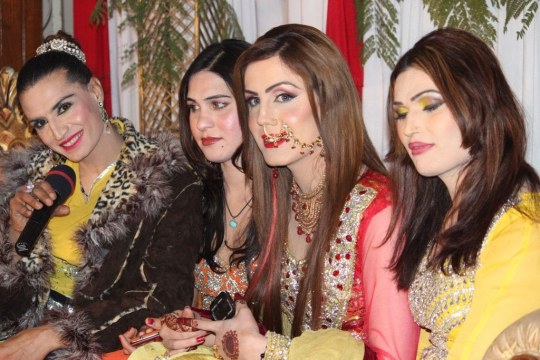
Pakistan’s Transgender Revolution
On May 19, 2023 by responding to Shariat the reserved verdict has struck down sections of the Transgender Persons (Protection of Rights) Act, 2018 by the Federal Shariat Court in Pakistan, reported Rehab Mahamoor, research assistant at Amnesty International. Of the many paradoxes of transgenderism in Pakistan is that, despite the innumerable hardships khawaja siras face, the country is actually a pioneer for transgender rights in Asia and the Islamic world. A watershed 2009 Supreme Court decision gave khawaja siras the right to vote and run for public office. Islamic Pakistan, at one time had among the most expansive Supreme Court protections and the best funding for transgender rights on the continent. Although surveys indicate about half of Pakistanis perceive khawaja siras as born intersexed, only about 1% of the hijra community is actually born hermaphroditic. Khawaja siras navigate complicated identity politics. Qamar Naseem, a transgender and public health activist with a local NGO called Blue Veins, described their situation to me over the phone from Peshawar. The Pakistani transgender community as a whole is called hijra. The former term of “shemale” adopted by the transgender community has been replaced with khawaja sira to refer to individuals within this hijra culture. This can refer to a cross-dressing man, a gay man or a person born male anywhere on the sexual spectrum.
1 note
·
View note
Text
LGBT entertainers from India
Vardaan Arora
Vardaan Arora (born April 22, 1992) is an Indian recording artist, songwriter, and actor based in New York.
Bobby Darling
Pakhi Sharma, famous as Bobby Darling and formerly known as Pankaj Sharma, is a transgender Indian actress active in Bollywood and regional Indian film industry.
Tista Das
Tista Das (Bengali: তিস্তা দাস) or Teesta Das (born 9 May 1978) is an Indian transgender rights activist, actor and writer from the Indian state of West Bengal. She acted in quite a few Hindi and Bengali films.
Sushant Divgikar
Sushant Divgikar is an Indian model, actor, singer, columnist, psychologist, motivational speaker, drag queen, pageant director, and video jockey.
In July 2014, they were crowned Mr Gay India 2014. They represented India at Mr Gay World 2014.
Rituparno Ghosh
Rituparno Ghosh (31 August 1963 – 30 May 2013) was an Indian film director, actor, writer and lyricist. After pursuing a degree in economics, he started his career as a creative artist at an advertising agency. He received recognition for his second feature film Unishe April which won the National Film Award for Best Feature Film. Having won 19 National Awards, along with his contemporaries Aparna Sen and Goutam Ghose, Rituparno heralded contemporary Bengali cinema to greater heights.
Vikas Gupta
Vikas Gupta (born 7 May 1988) is an Indian television producer, creative director, screenwriter and host. He is known for participating in Bigg Boss 11 and hosting MTV Ace of Space.
Ivanka Das
Ivanka Das is an Indian actress, dancer, choreographer, model, and drag queen. She is known for her participation in the Indian reality television show Dance Deewane and the Netflix series Bombay Begums.
Karpaga
Karpaga is an actress who made her debut in a Tamil movie called Paal. She is the first trans person ever in India to perform a leading role in a mainstream movie.
Freddie Mercury
Born in 1946 in Zanzibar to Parsi-Indian parents, Mercury attended English-style boarding schools in India from the age of eight and returned to Zanzibar after secondary school. In 1964, his family fled the Zanzibar Revolution, moving to Middlesex, England.
Sumathi Murthy
Sumathi Murthy is a Hindustani classical vocalist, composer and LGBT right activist based in Bangalore. She hails from the Agra gharana of singing. She identifies herself as a queer.
Narthaki Nataraj
Narthaki Nataraj is a Bharatanatyam dancer. In 2019, she was awarded the Padma Shri, making her the first transgender woman to be awarded India's fourth-highest civilian award.
VJ Andy
VJ Andy, also known as Andy Kumar, is a television personality in India. He worked as Video Jockey for Channel V and has hosted several television programs including Dare 2 Date a dating reality show. He was a contestant in the seventh season of Bigg Boss, finishing fifth.
Rose Venkatesan
Rose Venkatesan is the first Indian talk show host based in Chennai, Tamil Nadu. She is a trans woman, and has been active in many fields like television and radio.
Laxmi Narayan Tripathi
Laxmi Narayan Tripathi (known as Laxmi, sometimes transliterated as Lakshmi) is a transgender/Hijra rights activist, bollywood actress, Bharatanatyam dancer, choreographer and motivational speaker in Mumbai, India. She is also the Acharya Mahamandaleshwar of kinnar akhada. She was born in Malti Bai Hospital on 13th Dec 1978 in Thane. She is the first transgender person to represent Asia Pacific in the UN in 2008. At the assembly, she spoke of the plight of sexual minorities. "People should be more human like. They should respect us as humans and consider our rights as transgenders," she said.
Aneesh Sheth
Aneesh Sheth (born January 5, 1982) is an Indian-American actress and transgender activist.
Yuvraaj Parashar
Yuvraaj Parashar is an Indian Bollywood model and film actor who starred in India's first homosexual film, Dunno Y... Na Jaane Kyon (Don't Know Why) (2010). His parents have taken legal action to disown him because of the film, despite winning acclaim from Deputy Chief Minister of Maharashtra Chhagan Bhujbal for their portrayal of bisexual men. Parashar is originally from Agra in India. Dunno Y... Na Jaane Kyun got 11 international awards including best actors and best film.
#translation#lgbtq community#lesbian#nonbinary#nonbinary lesbian#lgbt pride#sapphic#lgbtqia#gay girls#lgbtq#queer#trans man#mtf trans#trans#transgender#trans pride#trans positivity#trans masc#trans women#transformation#gay pride#pride and prejudice#pride#pride parade#pride lb#wlw pride#queer pride
31 notes
·
View notes
Text
LGBTQI+ Rights in Pakistan
LGBTQI+ community continuously faces discrimination in Islamic Republic of Pakistan.Both homosexuality & transgenderism are seen as deviant & immoral.Homosexuality is a punishable crime in both Pakistan's constitutional & federal sharia law.Pakistan's Transgender, Non-binary people who identify as Khawaja Sara (a term derived from sufi islam & also used as respective designation for hijras,queer people in Mughal empire) are also subject to various types of discrimination & harassment.Since 2020, anti-transgender sentiments spred across the nation.There were several protests by Islamists,Conservatives against Pakistan's Inclusive Transgender Bill.
Conservative Jamaat-e-islam claimed that ''The law was against Islam.There's nothing like transgender in Islam''.Senetor Mushtaq Ali first started the anti-trans propaganda that this law will allow marriages of same sex & sex change[...]

LGBTQ+ pride flag of Pakistan
In Pakistan homosexuality is a criminal offense under the Section 377.The section of the Penal Code criminalising consensual queer relations was inherited from the colonial rule of the British Raj.It was enacted on 6 October 1860 in Indian sub-continent and went into force on 1 January 1862.
Although some human rights activists,experts claimed that punishment under section 377 is rarely imposed.The Pakistani Constitution does not explicitly make mention of sexual orientation or gender identity.It does contain certain provisions that may impact the constitutional rights of LGBT Pakistani citizens.Further crossdressing is not criminalized in Islamic State of Pakistan.But Pakistani society is very patriarchal & transgressing the societal gender norms may bring threats against queer people.Crossdressing or transgressing the societal gender norms may be punishable under Pakistan's Sharia law.
History
Homosexuality was widely tolerated & accepted untill 1860s.Mughal,Gaznavid empires also tolerated several gender & sexual fluidity.Sultan Babur mentioned about his sexuality,crush in Baburnama.There were homoerotic & homoromantic writing in Islamic literature.From 1750-1830 female homoromantic narratives were documented in Urdu poetry.Transgender & Gender diverse people enjoyed high status in Mughal era.Hijra identity is documented to have evolved during the Delhi Sultanate (1226-1526),Mughal Empire(1526-1707). manual laborers, military commanders, political advisors, and guardians of the harem.Most of them were served in royal household,palace,harem.Further hijras were military commanders,supervisors of royal house,manual laborers,political advisors in mughal era.The dominant school of Islamic thought in the mughal empire, hanafism was much more lenient & did not mandate punishment for homosexuality.During the reign of the mughal emperor Aurangzeb, he brought Fatawa-e-Alamgiri,which mandated several types of punishments for homosexuality.
Since 1850s British colonized sexual & gender minorities in Pakistan,India & Bangladesh.In 1871 british labeled hijras as criminal & later started a widespread campaign against gender minorities in Indian subcontinent.As a result hijras/khawaja sara became a marginalised section society.From the beginning British Raj, colonial authorities deployed various strategies to eradicate hijras, whom they saw as "a breach of public decency.
The roots of the sectarian violence, like most discrimination against minority communities, can be traced back to the military dictatorship of Ziaul Haq.He imposed a hardline Sunni interpretation of Islam in the country,created and strengthened militant groups.
As part of the Islamisation of Pakistan, the Hudood Ordinances were enacted in 1979, stipulating severe punishments for adultery, fornication,sodomy.The amendments included corporal and capital punishments, such as whipping of up to 100 lashes and death by stoning if married (for adultery).
Hijra Culture in Pakistan
Transgender,Trans-feminine,Bigender,Genderqueer/Non-binary people are colloquially known as Hijra in South Asia.Hijra is an umbrella term for multiple gender & sexualities,including but not limited to Trans Woman,Intersex & Eunuch individuals.In Pakistan,many trans,queer & non-binary community prefer the term Khawaja Sara rather than Hijra.Some people doesn't like the term Hijra,Khusra,Khusaraa.Because such terms are often used to humiliate gender-diverse community in Pakistan. Beside this,transvestite homosexuals & transvestite dancers are known as Zenanna.Zenana people may take part in hijra tradition or culture.Most khawaja saras are deemed to have been direct cultural descendants of the court eunuchs of the Mughal era.
Most of the Khawaja saras also follow sufi beliefs & practices sufi Islam.Most of the Hijras,Khawaja Saras honour the Prominent Sufi & Shia figures such as Khawaja Gharib,Khwaja Chisti,Imam Husseini,etc.Khawaja Saras also pay homage to sufi shrines/dargahs.Khawaja Sara/Hijra do religious pilgrimage in Mecca.
Most of the Pakistani Khawaja Saras lives under the socio-cultural kinship,which called Guru-Chela.Hijra/Khawaja Sara community follows a hierarchal system.Guru is the head & leader of Khawaja Sara community.Chelas are the disciple of Guru Khawaja Sara/Hijra.Chelas have to obey Guru.Guru has to provide basic things for chela's livelihoods.Guru is also considered as mother in the hijra community.Guru's mother,senior hijras are called nani or dadi(grandma).
Chelas collects money by dancing,singing in marriage occasions as well as other social functions.Hijra/Khawaja Sara also blesses newly wed-couple,married couple,new-born baby.This practice is called Badhai in Hijra/Khawaja Sara culture.Pakistani society believed that God gave supernatural powers to Hijras/Khawaja Saras to bless & curse people.South asian people thought that hijras are born with genital dysphoria,gender ambiguity.People are afraid that hijras might curse their fate so people have listen to their needs,give them alms, & invite their presence at various events and functions, especially,birth of a new born child, circumcisions, weddings.
Despite having a relatively cultural tolerance Khawaja Sara faces social stigma,discrimination in religiously-conservative Pakistan. In northern Pakistan transgenders are the most vulnerable group.In Northern area of Pakistan, hijras faces widespread violence.
Trans,Khawaja Sara rights
Pakistan has very limited transgender/khawaja sara rights,intersex rights.Since 2018, transgender & gender diverse community got much privilege under the Trans Rights Bill.Hijra community often beg, dance & engage in sex work as their only means of livelihood,becoming soft targets for harassment,violence,abuse and rape, mostly in the hands of the local & religious polices.Transgender Persons (Protection of Rights) Act 2018 gave transgender people the right to choose their gender identity under the X card, right to access in healthcare & education,right to seek protection,etc.
But in 2023 Sharia court judgement declared the law against Islam.Some trans activists criticized the judgement of Federal Sharia court.Transgender,Khawaja Sara activist criticized the judgement of Federal Sharia court
Barrister Muhammad Aslam Khaki filed a petition in the Supreme Court that led to the hijra's voting rights after reading about a brutal incident in Taxila, near the capital, where police allegedly robbed and raped a group of eight hijras.
Since 14 November,2009 Hijras were allowed to vote under a third gender/sex option.Hijras got a recognition
0 notes
Note
the Indian anon talking about hij/ras:
tho the term itself isn't derogatory, I def dont feel comfortable using it because for all my life, I've only heard it being used as a slur (I was born and brought up in rural west of India). here are some people explaining it better
a bit of history about hij/ras:
https(://)www(.)india(.)com(/)lifestyle/the-history-of-hijras-south-asias-transsexual-and-transgender-community-540754/
their issues (mainly getting into prostitution just afford basic needs):
https(://)www(.)hera-single(.)de/hijras/
https(://)indianexpress(.)com(/)article/opinion/why-is-the-hijra-a-term-of-abuse-and-insult-eunuch-4707100/
https(://)www(.)reddit(.)com(/)r/LGBTindia/comments/fisc6o/question_is_the_term_hijra_inherently_offensive/
↳ see u/DaSerialGenius's response
regarding Hij/ra activism, unfortunately all Indian, Pakistani, Bangladeshi and Nepali govts took the easy way out- declaring them as third gender and not that they were being oppressed by religious practices and gender roles. you can read about the rullings here:
https(://)sewa-aifw(.)org(/)the-hijra-community-and-decolonizing-gender/
getting more marginalized during corona:
https(://)www.atlanticcouncil(.)org/blogs/new-atlanticist/indias-hijras-find-themselves-further-marginalized-amid-the-pandemic/
you can see how everyone is using the term transgender and hij/ra interchangeably. the articles and news about this community in native south asian languages used to refer to the equivalent of third gender but the term third gender itself has become a politically correct term. so now, lgbt and hij/ra activism has been entangled and honestly, I'm not an expert and I can't explain clearly enough how the tras are trying to use the hij/ra movement for their own agendas. I'll try to find more resources but I highly suggest watching yt documentaries. I might send some on here if youd like.
sorry for the long text and I hope all the links made it thru.
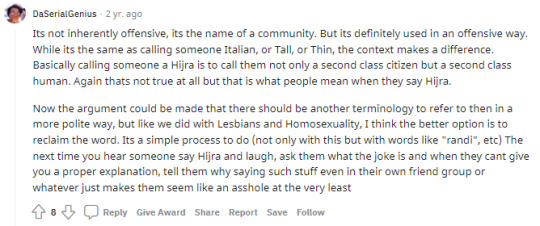
thank u so much for all the links and resources, i haven't been able to read through all of them fully but ill be tagging it so i can do so in the future. id love to see a documentary on the topic so please feel free to recommend one if youd like!
21 notes
·
View notes
Photo
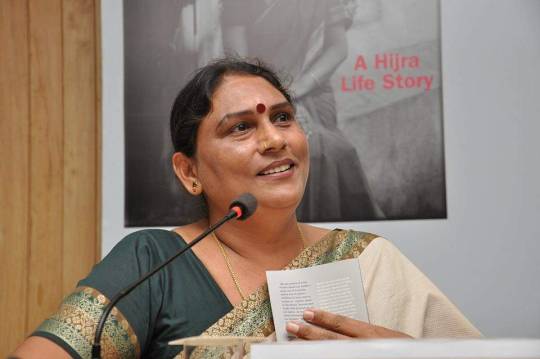
A. Revathi
Gender: Transgender woman/Third gender (Hijra)
Sexuality: N/A
DOB: N/A
Ethnicity: Indian - Tamil
Occupation: Writer, activist, sex worker
#A. Revathi#A Revathi#lgbt#lgbtq#qpoc#transgender#trans woman#third gender#Hijra#indian#poc#asian#tamil#writer#activist#sex worker#popular#popular post
130 notes
·
View notes
Text

[IMAGE: a diagram of the “trans gender umbrella”, which encompasses, from left to right: masculine women, androgynous persons, feminine men, Hijra, transsexuals: male to female and female to male, two spirit, intersex persons, bigender, third gender, eunuchs, drag kings and queens, crossdressers, transvestites, intergender, gender queers, and agendered. The rain above the umbrella is labeled “feminine women”, “masculine men”, and “cisgender”. Below the umbrella is a silhouette of a crowd, and the text “encompasses any individual who crosses over or challenges their society’s tranditional gender roles and/or expressions.” There is a small parenthesis that reads “graphic adapted from Josephine Tittsworth by Mel Reiff Hill”. /END]
This is what I’m talking about when I say the word “transgender” has changed, by the way. It’s a good visualization of an idea expressed separately in Transgender Warriors:
Today the word transgender has at least two colloquial meanings. It has been used as an umbrella term to include everyone who challenges the boundaries of sex and gender. It is also used to draw a distinction between those who reassign the sex they were labeled at birth, and those of us whose gender expression is considered inappropriate for our sex. [...]
I asked many self-identified transgender activists [...] who they believed were included under the umbrella term. Those polled named: transsexuals, transgenders, transvestites, transgenderists, bigenders, drag queens, drag kings, cross-dressers, masculine women, feminine men, intersexuals [...], androgynes, cross-genders, shape-shifters, passing women, passing men, gender-benders, gender-blenders, bearded women, and women bodybuilders who have crossed the line of what is considered socially acceptable for a female body.
(Leslie Feinburg, Transgender Warriors: Making History from Joan of Arc to Dennis Rodman. 1996)
My point here is not that we need to change the way we think about the word “transgender”; I think the modern understanding is definitely an improvement on words like “transsexual” and any reliance on a “sex/gender” distinction. Words evolve, and understandings evolve, and it’s important that they reflect each other well.
My point is that when we forget this history, we forget the parts of this theory that were working for us.
Cissexism and transphobia do not target people based exclusively on their internal experiences of gender. There are different ways in which they impact those of us who are, in fact, transgender the way we think of it today. But when we only see trans people as the targets, we misunderstand what this system is, what it is built to do, and who it serves.
Cissexism is a form of gender-based oppression, an arm of the patriarchy, and a weapon of oppression that seeks to divide the people in order to pit us against each other. Historically, along with lived gender experiences that we think of as trans today, these "trans" gender expressions have been a form of rebellion against oppressive systems and ruling classes.
Cissexism isn't targeting us because we're "broken", it's targeting us because by the nature of our existence, we're rebelling against a system that was built to control everyone. Controlling the ways in which we are allowed to express gender, and dictating value and stripping power based on how well we conform to those expressions, are ways of controlling people. The punishment for nonconformity- transphobia- is a way of controlling all of us.
It doesn't take anything away from trans people to acknowledge this. If anything, it protects us.
Everyone should understand the systems they're being controlled by. Everyone should understand that trans people are not being punished for a crime that cis people would never commit; we're just being punished for a crime that it would kill us not to commit. Considering it less of a crime because we got a doctor's note saying as much just gives the system a new way to control us.
What we need is to look at the system and ask why this is a crime in the first place. We need to remove this tool of oppression altogether- for everyone. And we can’t do that if we refuse to understand what it is.
#trans#transgender#queer history#queer#lgbtq#lgbt#nonbinary#gnc#not horses#i know it's 1am but Thoughts have Entered My Head#and I had to Make Words
383 notes
·
View notes
Text
India's 'invisible' trans community struggles as coronavirus shuts life down
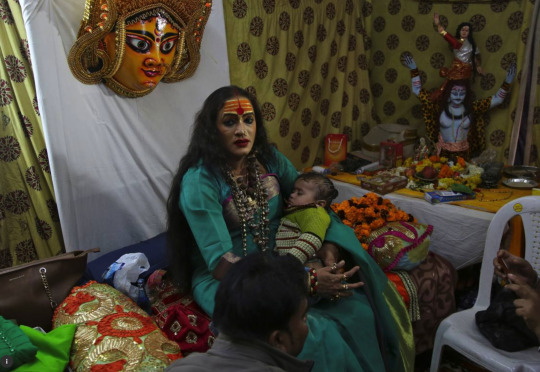
Thompson Reuters reports:
//- India's coronavirus lockdown leaves transgender people at heightened risk of poverty and ill health because they exist on the margins of society, eking out a living through sex work and begging, activists and community members said on Tuesday.
The warning came as Prime Minister Narendra Modi announced a 21-day nationwide lockdown in the country of 1.3 billion, where the virus has claimed at least nine lives.
Anindya Hajra, a trans woman who works with the Pratyay Gender Trust on transgender livelihood issues, said India's estimated 2 million trans people would be among those worst hit by the move because many make their living on the streets.
"They do not have the social privilege of operating within a distant 'online' world when their lives are precariously balanced on the thread of social interaction and functions," said Hajra.//
Not all Indian transgender women belong to the Hijra community, but many do, and as such they are often ostracized and looked down upon.
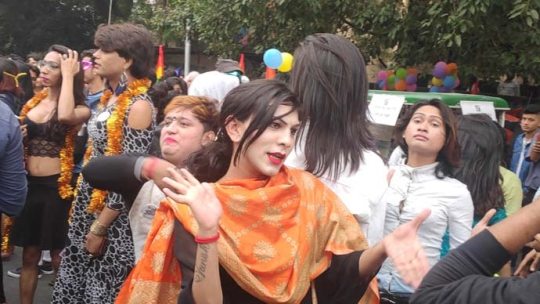
The lives of transgender people of India is very difficult in times of a pandemic and lockdown. (Photo: Preeti Choudhary)
Preety Choudary has written an interesting article on being a transperson in India during Covid-19 pandemic over at Daily O:
//Since their livelihood is largely dependent on dealing with the public and community-oriented jobs, the Hijras are financially affected in the times of pandemic. Like daily wage workers, the Hijras earn on a day-to-day basis from begging, badhai-kirtan [giving blessings] or sex work.
With even the marriage ceremonies being postponed following the health advisory guidelines and social distancing, their work is affected and it leaves them to rely on what they already have.
At a time when death is looming on heads, who would celebrate a birth? Who would come out to give alms? Who would risk their life for momentary pleasure? And how will the transgender population, already far removed from the mainstream crowd, sustain during these times of lockdown?//
During the times of lockdown, the government needs to pay heed to its third gender population, Choudary says. “This is a community that has never been given its due with dedicated policies and advisories that are meant especially for them.”
See also:
Moving story of Indian transgender woman and her daughter
How Britain tried to ‘erase’ India’s third gender
Hijras, Bangladesh’s ‘Third Gender’, Celebrate First Ever Pride Parade
Hindus have a long history of supporting transgender people
The Kama Sutra on Transgender People
Top photo: Danish Siddiqui
2K notes
·
View notes
Note
Also, pakistan has some legal protections for hijras but homosexuality is punishable by death…
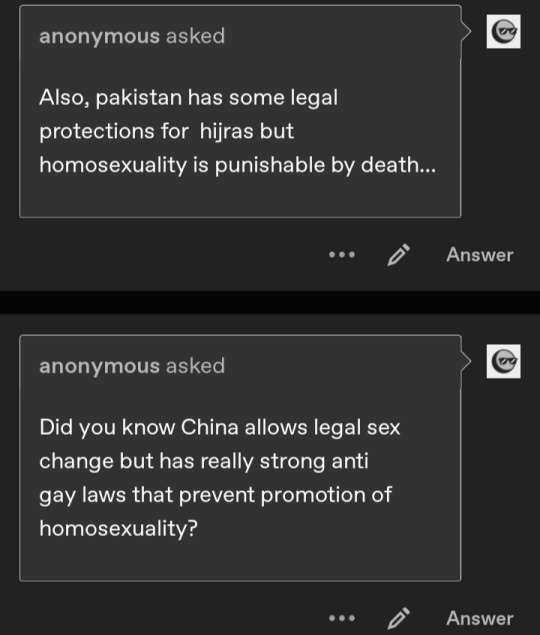
Interesting. Sorry I don't know much about LGBT related rights and laws from those countries and I think the exact situations there are a bit different/complicated than what you are describing.....I am not sure.
But I get what you mean. "Cis" homosexual people aren't as privileged compared to trans people in most places as Western activists make it out to be. And I agree.
2 notes
·
View notes
Text
And so the Twitter Spaces uraiyadal began with Revathi, theatre artiste, author and trans activist, narrating her journey from a village in Salem to Delhi, equipped with just Rs 350 and a bare bones address — all this when she was just a teenager. How did she even know that she would find her answers in Delhi? A chance friendship with lungi-clad transwomen in her village that led her to Dindugal’s Seiveer Amma and the Delhi transwomen who come to her during the temple festival season. “All of them looked like real women; I was so awed. It was there that I was able to live as a woman — I put on my sister’s paavadai-sattai and wore a wig. It felt like a world that was made for me,” she recounts. A few months later, she — who had barely seen a train till that point — found herself boarding one to Delhi.
Taking off from Revathi’s journey, Thanuja pointed out that the society keeps transwomen in constant motion — in search of even the most basic of their requirements. While the sex affirmation surgery had Indian transwomen reaching out to Delhi and Mumbai, women in Malaysia and Singapore were moving to other countries for it. That’s how the late Asha Amma — M Asha Devi, a prominent figure in Malaysia’s trans rights movement — made her way to India. In the years to come, after Malaysia bans the surgery and Singapore makes it prohibitively expensive, other women would go to Thailand.
Even if it meant cutting short the recovery period to just two days and returning home in an eight-hour bus ride, urine bag in tow, narrated Thanuja. The situation, while different in other countries, comes with its own set of problems. While Sri Lanka aids and assists in every legal way, going as far as changing the details in one’s birth certificate, there is very little social acceptance there, she said. While the Western countries have far more facilities and awareness, its people have very little tolerance for the trans community.
While both Thanuja and Revathi had written about their lives and strife, their work emanated from a place of oral history. For Revathi (The Truth About Me: A Hijra Life Story), it was compiling the 5-10 minute speech capsules she had been used to preparing for the events and lectures she had been invited to over the years. For Thanuja (Thanuja: Eezha Thirunangaiyin Payanamum Porattamum), it was documenting the state of affairs of migrating transwomen and the countries they encounter. At the end of the night, this Twitter Spaces event itself became a slice of oral history that is set to be documented for posterity.
#tamil trans history#a. revathi#thanuja singam#tamil oral history#malaysian tamil#singaporean tamil#asha devi#eelam tamil#tamil literature
16 notes
·
View notes